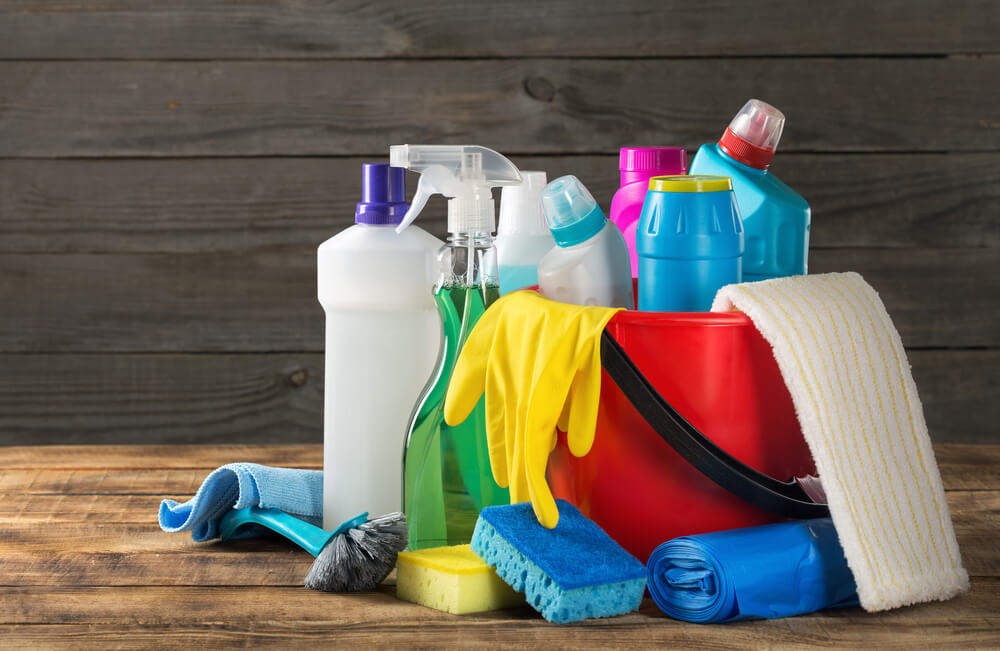Detailed Everyday Cleaning Tips: From Defrosted and Cleaned Every Few Months to Removing Clutter
Detailed Everyday Cleaning Tips: From Defrosted and Cleaned Every Few Months to Removing Clutter
Blog Article
Comprehending the Need for Extensively Decontaminating and Disinfecting Frequently Touched Surfaces in High-Traffic Areas
In the realm of public health and wellness and safety and security, the precise sanitation and sanitization of frequently touched surface areas in high-traffic areas stand as critical actions in stopping the spread of hazardous microorganisms. The relevance of this method expands much past simple cleanliness, diving right into the world of illness prevention and community wellness. By exploring the various aspects of surface area sanitation, from the risks related to overlooking cleaning protocols to the effective approaches that can be utilized, a more clear understanding arises of the important function these practices play in securing public health and wellness. As we browse this discussion, it ends up being obvious that the ramifications of detailed surface area disinfection reverberate not only within the boundaries of a particular environment however additionally reverberate on a wider scale, affecting the health and safety of individuals throughout diverse public setups.
Importance of Surface Disinfection
Highlighting the comprehensive sanitation of high-traffic surface areas is important in keeping a sanitary environment and avoiding the spread of dangerous virus. High-touch surface areas such as door handles, light buttons, lift switches, and kitchen counters work as reproducing grounds for viruses and germs. Normal sanitation of these surface areas is critical to decrease the danger of contamination and transmission of illnesses.
By implementing a robust disinfection method, companies and organizations can produce a safer setting for site visitors, workers, and consumers. Correct surface area disinfection not only mitigates the spread of transmittable diseases but additionally instills self-confidence in the sanitation and security of the properties. This aggressive strategy demonstrates a commitment to health and health, which is especially important in high-traffic locations where the possibility of exposure to pathogens is enhanced.
Additionally, surface area disinfection plays an important duty in overall infection control approaches. Combined with hand health methods, putting on masks, and keeping physical distancing, detailed sanitation of high-touch surface areas forms a thorough defense against the transmission of damaging bacteria. Focusing on surface area disinfection is a crucial part of an all natural technique to health and wellness in common areas.
Dangers of Overlooking Cleansing Practices
Ignoring thorough sanitation of high-traffic surfaces dramatically increases the risk of viral and microbial contamination, positioning a serious risk to the health and wellness of individuals often visiting these areas. Failing to implement appropriate cleaning methods can lead to the buildup and spread of damaging pathogens, consisting of viruses and germs, on regularly touched surface areas such as doorknobs, handrails, lift buttons, and kitchen counters.

Additionally, overlooking the importance of detailed cleaning not only endangers the well-being of people but also threatens efforts to keep a sanitary and clean atmosphere. It is essential to recognize the relevance of appropriate disinfection protocols in stopping the spread of infections and protecting public health.
Efficient Sanitation Methods
To maintain optimum sanitation and lower the threat of contamination on high-traffic surfaces, employing effective sanitation methods is essential. One of one of the most efficient and common sanitation techniques is making use of chemical disinfectants. These items can vary in stamina and structure, with some targeting certain pathogens like bacteria or infections. It is essential to comply with the manufacturer's directions for proper dilution, call time, and ventilation when using chemical disinfectants to ensure their performance - defrosted and cleaned every few months.
One more efficient approach is making use of UV-C light. UV-C light has actually been shown to be efficient in eliminating a wide array of like this microbes by interrupting their DNA structure, therefore stopping them from replicating. It is necessary to make use of UV-C light appropriately, making sure that the correct intensity Everyday cleaning and exposure time are applied to achieve the wanted sanitation results.
Furthermore, employing heavy steam cleansing as a disinfection approach can be extremely efficient, especially on surface areas that are heat-resistant. Steam can pass through permeable surface areas and kill microorganisms, viruses, and various other pathogens efficiently. When using steam cleansing, it is essential to ensure that the surface gets to the required temperature level for an enough quantity of time to assure proper disinfection.
Effect On Public Wellness
The upkeep of high standards of sanitation and disinfection on high-traffic surfaces plays a critical function in securing public wellness. Regularly touched surface areas in areas with high tramp, such as doorknobs, handrails, lift switches, and restroom centers, serve as reproducing premises for hazardous virus.
Efficient sanitation techniques not only protect individuals from falling sick however likewise add to the total wellness of society. Public health and wellness authorities emphasize the importance of keeping tidy environments to stop outbreaks and contain the spread of health problems. In high-traffic locations like flight terminals, institutions, medical facilities, and public transportation systems, the impact of strenuous disinfection procedures can not be downplayed. Focusing on the sanitization of often touched surfaces is a proactive method to promoting public health and enhancing the safety and security of people in shared areas.
Applying Routine Cleaning Up Protocols
Quickly setting up and sticking to a constant timetable of cleaning procedures is vital for maintaining the sanitation and security of high-traffic surface areas. Regular cleansing procedures are vital in preventing the buildup of bacteria and pathogens on frequently touched surface areas, particularly in areas with high foot traffic. By executing a systematic strategy to cleaning, companies can properly minimize the danger of disease transmission and develop a much healthier setting for workers, customers, and the public.
To develop an efficient cleaning routine, it is crucial to identify high-traffic locations that need frequent focus. These locations might include doorknobs, handrails, elevator buttons, restroom centers, and shared devices. Applying a routine cleansing regimen that targets these surface areas numerous times a day can significantly click this decrease the spread of dangerous germs and viruses.
Moreover, using appropriate cleaning agents and disinfectants is essential to guaranteeing that surfaces are thoroughly sterilized. Normal training of cleansing personnel on correct cleansing strategies and the relevance of adherence to the cleansing schedule is likewise crucial in keeping a hygienic environment. By prioritizing consistent cleaning methods, organizations can promote the health and wellness and well-being of individuals that engage with these high-traffic surfaces.

Conclusion
In conclusion, it is critical to prioritize thorough disinfection and sanitization of often touched surface areas in high-traffic locations to protect against the spread of dangerous virus and maintain public wellness. It is critical to acknowledge the significance of maintaining tidy surfaces in high-traffic areas to guarantee the wellness of the neighborhood.
In the realm of public health and safety and security, the precise disinfection and sanitization of frequently touched surfaces in high-traffic areas stand as extremely important steps in avoiding the spread of dangerous virus. By exploring the different aspects of surface disinfection, from the dangers linked with disregarding cleansing protocols to the reliable approaches that can be used, a clearer understanding emerges of the essential function these techniques play in safeguarding public wellness.Furthermore, utilizing steam cleansing as a sanitation method can be very efficient, specifically on surface areas that are heat-resistant. When making use of steam cleaning, it is vital to ensure that the surface gets to the needed temperature for an enough amount of time to assure appropriate sanitation.
In final thought, it is vital to focus on thorough sanitation and sanitization of regularly touched surface areas in high-traffic areas to stop the spread of unsafe virus and maintain public wellness.
Report this page